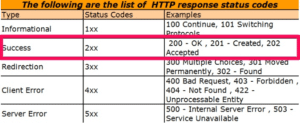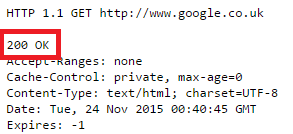What is the 200 status code?
Hypertext Transfer Protocol (HTTP) status codes are like brief messages between your website’s server and a browser.
Each of these messages lets you know if your request to view a web page was successful.
Status codes can begin with any number from one to five. 200 status codes indicate that the server has successfully received and completed a request from your browser.

200 status code
A 200 status code is a good thing since they send the message that a request was a success.
When a browser receives a 200 OK code, it means that everything went according to plan.

Other 2xx status codes signal the same thing — just in a bit more detail. Here is a brief breakdown of some 2xx status codes.
201 Created: A 201 code shows that the request was successful, leading to the creation of a new resource, like a new page.
202 Accepted: A 202 code shows that a request was received, but is not yet complete.
203 Non-authoritative Information: When you receive a 203 code, this means that a third party server has provided the information in the entity header rather than the original site.
204 No Content: This code means that a request was received and completed, but that no data needs to be sent back.
205 Reset Content: A 205 code is a response sent from the server to the client that resets the document where the original request came from. (I.e., when a visitor completes and submits a form, a 205 status code signals that the server is asking the browser to clear it out)
206 Partial Content: This code serves as a response to a request for a portion of a document, commonly used when a browser requests just a small part of a web page.
207 Multi-Status: This code can include multiple, separate response codes within the same response.
208 Already Reported: A 208 code lets the client tell the server that a resource was mentioned earlier and doesn’t need to be included again.
226 IM Used: This code shows that the server has fulfilled a request for the resource. This response represents the result of one or more instance-manipulations already applied to the current instance.
200 status code history
HTTP was created as the language of the World Wide Web in 1989 by Tim Berners-Lee with CERN.
HTTP status codes allow for servers and browsers to communicate with one another, allowing visitors to access web pages.
The standards for HTTP were created by the Internet Engineering Task Force (IETF) and the World Wide Web Consortium (W3C).
2xx status codes are merely one group of these codes created the signal a successful interaction.
200 status code uses
A 200 success response code tells the browser that a request was received, broken down, and accepted.
This is what makes 2xx codes different from 1xx codes, which are just informational without confirming that a request was a success.
If the website you built isn’t responding with 200 status codes, there’s a problem.
And any issue with your URLs will lead to a drop in traffic since none of the links to your site containing those URLs will work properly.
You can use your recognition of 200 status codes to make sure that your URLs are functioning correctly.
They show that there aren’t any issues with receiving or sending requests between your server and a browser.
200 status code misunderstandings
Since 200 HTTP status codes are used when a request has been completed successfully, these codes shouldn’t be used along with error codes.
Because of this, the following request/response exchange including both a 200 OK status code and an error message is incorrect:

Only use 200 response codes to solely indicate a successful transport of a request to a server or a successful execution of it once it has been received.


